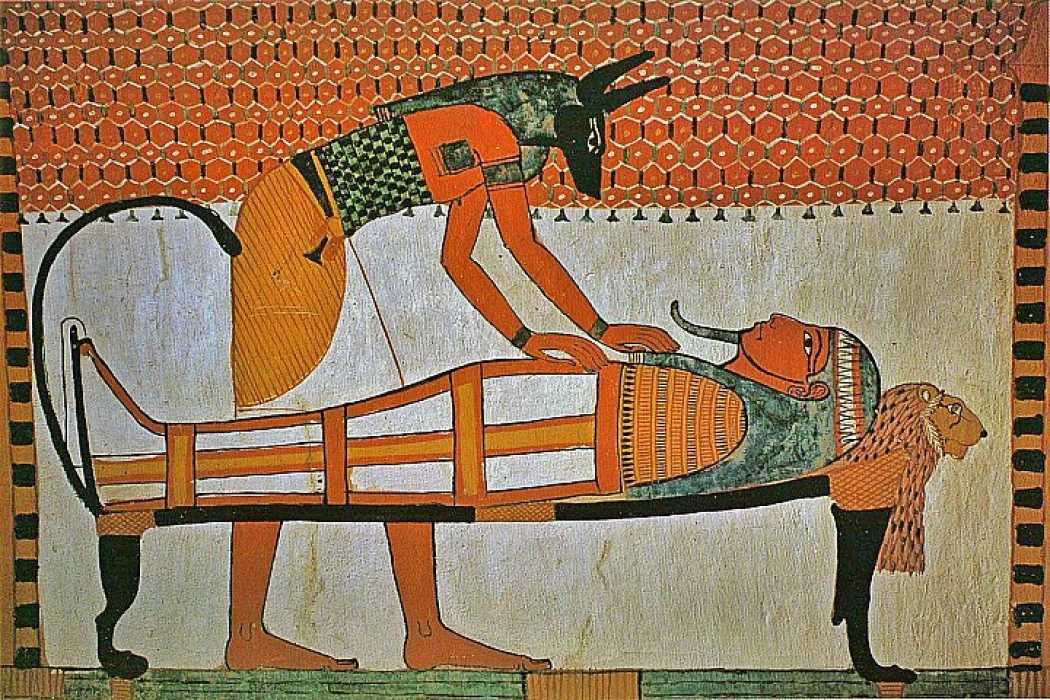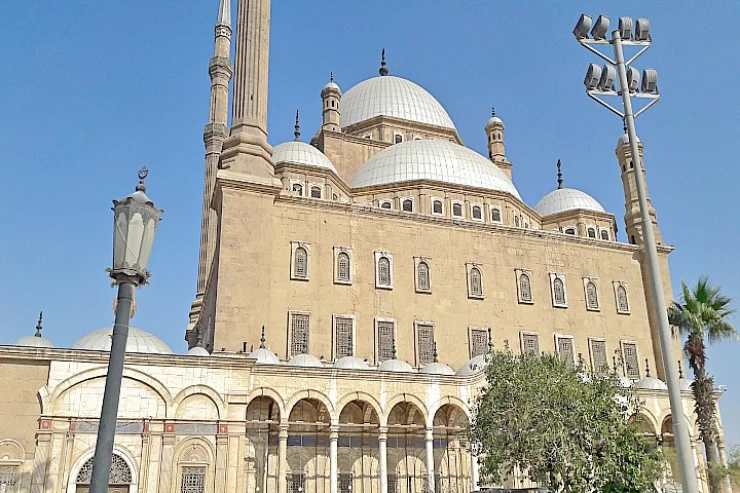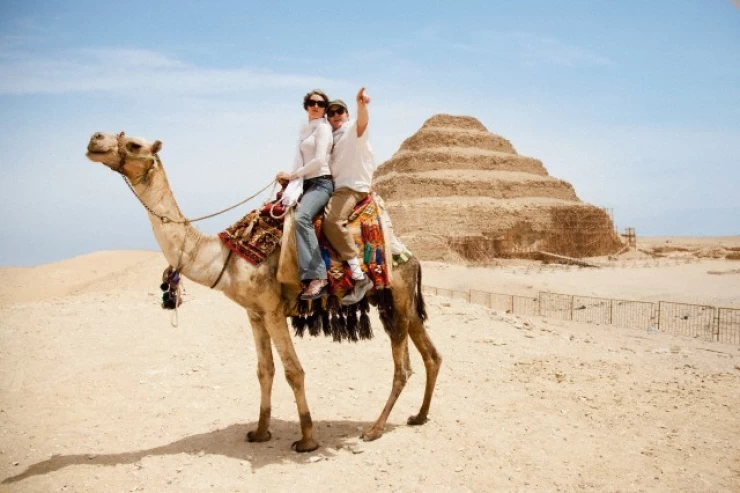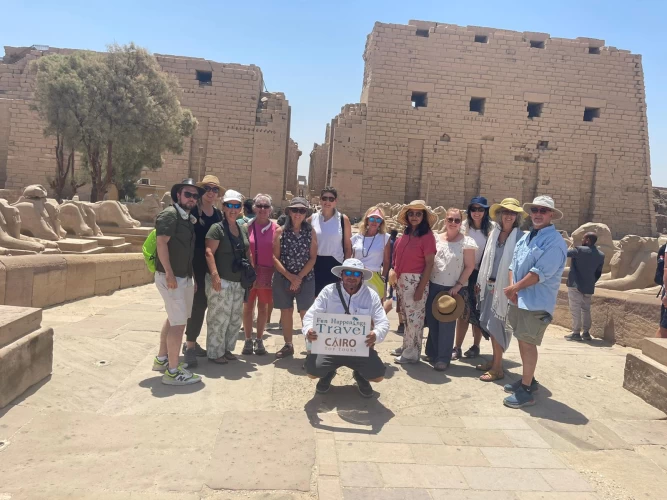
Mumifizierung im alten Ägypten Altägyptischer Mumifizierungsprozess
Eine solche Wissenschaft blieb eines der Geheimnisse der Pharaonen im alten Ägypten, und wir wussten nicht einmal davon, außer dem, was der griechische Historiker Herodot erzählte. Er hat bei seinem Besuch in Ägypten im fünften Jahrhundert vor Christus einige Methoden der Mumifizierung aufgezeichnet, aber mit den neuesten Funden haben wir mehr über diese Wissenschaft erfahren, besonders als die amerikanische Mission der American University den Friedhof Nr. 63 im Tal der Könige entdeckte, wo sich acht Särge befanden, einschließlich der Reste von Werkzeugen und Materialien für den Mumifizierungsprozess, der zur Erhaltung der Mumie des goldenen Königs Tutanchamun verwendet wurde und damit eine große Tür öffnete, um seine verborgenen Geheimnisse zu enthüllen. Es war eines der wichtigsten Geheimnisse der alten Ägypter, die Leichen vor Verwesung und Zersetzung zu bewahren, das sie verzweifelt als Geheimnis bewahrten.
Wenn Sie einen Ausflug nach Luxor mit einem Flug von Kairo oder einen Ausflug nach Luxor für 2 Tage von Kairo buchen, besuchen Sie das Tal der Könige bei Tagesausflügen in Luxor oder bei Tagesausflügen in Kairo.
Im Laufe der Geschichte Ägyptens haben die Ägypter immer gesagt, dass der Geist, der den Körper nach dem Tod verlassen hat, zurückkehren wird. Und sie benutzten keine künstlichen Methoden. Deshalb waren sie damit zufrieden, die Toten in Kratern auf dem sandigen Boden der Wüste begraben zu haben, sie wurden in mehrere Falten aus Leinen oder Leder verschiedener Tiere oder in mehrere Zweige gewickelt. Der innere Darm half, den Körper vor Verderb und Zersetzung zu bewahren, wie es in den für die Zeit zwischen 8000 und 5000 v. Chr. entdeckten und modernen Körpern zu sehen ist. Diese Methode blieb bis zum Beginn der Ära jener Familien, in denen sie auf dem Schmuck waren, die natürliche Bewahrung der Körper unverändert. Die Körper sind mit farbigen Armbändern verziert und in mehrere aufeinanderfolgende Falten aus gewebtem Leinen gewickelt.
Sie können einige Beispiele von Mumien im Mumiensaal des Ägyptischen Museums in Kairo sehen, oder zwei Mumien in der Ausstellung in der Grabsammlung von Yuya und Tuya im zweiten Stock, sogar ein Gebiet, das auf Tiermumien spezialisiert ist, da die alten Ägypter einigen Tieren besonderen Respekt zollten und einige im alten Ägypten als Götter galten. Dies ist möglich, wenn Sie eine der Tagesausflüge nach Ägypten buchen, um eine außergewöhnliche halbtägige Tour nach Kairo zum Ägyptischen Museum zu erhalten. Unsere Transit-Tour nach Kairo beinhaltet auch Sightseeing-Touren zum Ägyptischen Museum, zum koptischen und zum Islamischen Kairo. Und natürlich werden Sie Artefakte im Ägyptischen Museum in vielen unserer Reisepakete in Ägypten sehen.
The art of mummification, because it is inspired by a lot about the afterlife, is one of the more dominant and fascinating practices that ancient Egyptian culture exhibited. For the ancient Egyptians, death was not an end but a transition into another state of being. The physical form was perceived as an important instrument to be used by the spirit; therefore, its maintenance was imperative for every traveler of the afterlife. This notion led to the complex procedure of mummification, which is an art and skill that has been cultivated over generations. Mummification in ancient Egypt was not just about treating a corpse; it was also about relieving a spirit; hence, it was performed alongside prayers and other rituals showing the deep honor the people had for their dead.
According to ancient Egyptian traditions, the conception of the soul is multi-layered and includes components such as the ka, ba, and akh. The ka refers to the life associated with a person, while ba stands for the person's character, and each is the form of existence that a person possessed in the afterworld. For these aspects to come together and coexist in the other world, due to the limitations of space and time, the physical form of the body had to be preserved. This is where mummification became the most important aspect.
The Egyptians felt that if the body were not mummified, the soul or spirits could not take the shape of the mummified body. And the ka would go hungry. This explains why one shouldn’t view the act of mummification purely as a decorative task of body preservation. It was a process that was important in assuring that one was buried in the afterlife.
The Evolution of Mummification
Mummification as a practice runs deep in the history of Egypt, as it can be argued that even in his prehistoric age, the Egyptians encouraged the preservation of bodies by conducting shallow burials in the desert. The natural hot and dry sand of the desert further dried the bodies, thus preserving them almost intact. However, with the evolution of Egyptian society and as the tombs became elaborate, natural preservation could not be achieved anymore. This stimulated the quest for artificial methods of preservation of dead bodies.
During the Old Kingdom (c. 2700–2200 BCE), the Old Kingdom (c. 2575–2150 BCE) commenced with the reign of Djoser, in whose time, though the process of mummification had been improved, it was still in its early alpha stages. The exquisite Egyptian practice of mummification or full body preservation, as it is infamously known, reached its peak during the New Kingdom's reign (c. 1550-1070 B.C.). By that time, the embalmers had beautified the process to a complete ceremonial performance, which took about 70 days.
The Ancient Egyptian Mummification Process: Step by Step
Mummification was a sophisticated process that entailed the preservation of the corpse and the execution of sacred rites. The whole operation was carried out in specially designated embalming parlors, which were often found near a cemetery or a holy place.
1. The Washing of the Body
The initial phase would be the cleaning of the body, which was done for two main reasons. The body was taken to the ‘Place of Purification,’ Shebu. Palm wine, which is a type of liquor, was then used to bathe the body afterward water from the Nile would be poured over them. This bath was not only functional; it also served a deeper meaning of how the dead body was being prepared for the afterlife's voyage.
2. Removal of Internal Organs
As soon as the body underwent the process of cleansing, the embalmers would cut an incision on the left side of the body at the abdomen level and remove the internal organs. The process of extraction of the liver, lungs, stomach, and intestines was very meticulous since these organ systems decomposed very fast. Then the organs were all treated and mummified before placing them in canopic jars. These jars were protected by the four sons of Horus, each one responsible for a specific organ.
Imsety, the one with a human head, was the protector of the liver.
Hapy was the cuckoo who was tasked with the protection of the life-supporting lungs.
With the face of a jackal, Duamutef was in charge of the tissues of the evaporating stomach.
Lastly, Qebehsenuef, a deity depicted as having the head of a Zank, was responsible for safeguarding the intestines.
Broken but not lost This covers the topic of canopic jars, which is of course recognizing the heart. The Egyptians, however, did not remove the heart, as it was an essential organ of thought and emotions that they thought would help in judging one’s soul in the afterlife.
3. Desiccation with Natron
To eliminate the possibility of decomposition, meticulous drying of the corpse was necessary. This was achieved by the use of natron, an evaporite salt mineral that consists of sodium carbonate and sodium bicarbonate. The corpse was covered in natron powder, both from the outside and the inside, and was subsequently left to dry for close to forty days. Besides absorbing water, Natron also had a strong antiseptic effect, which aided in the preservation of the corpse.
4. Filling and Stuffing the Body
After the process of embalming had been finalized, the embalmers defrosted the body from the nanotron and performed a secondary wash of the corpse. Rags, wood shavings, and even dried plants and animals, among other things, were put to use to stuff the body cavities to retain the shape of the bones and to improve the overall look of the corpse. This stage ensured that the corpse was lifelike, which was very important due to the requirement for postmortem supervision of the holy corpse.
5. The Wrapping of the Body
Once the physical body had been established and completed, the final and most familiar aspect of the mummification of a body took place, which is known as the wrapping of the body. The embalmers used long strips of linen to layer wrappings around the dead body in various folds. During this process, amulets and charms were also added into the folds of the linen to ensure they would help in guarding the dead on his way. Djed pillar, which represented stability, and ankh, which represented eternal life, are some of the amulets.
Pieces of rotten cotton remained to stain the wrapping of the corpse. During this time prayers and rituals were chanted and carried out in order to keep the corpse and the ritualist as clean as possible spiritually. Introduced in the text is the Book of the Dead, which is a collection of rituals and incantations meant to assist the deceased in navigating the realm beyond. Such writings were normally found within the wrappings or placed in the burial chamber.
6. The Final Touches
The last action performed during mummification was covering the face of the dead with a functional mask. For kings and other significant personalities, these masks were created out of gold, like the famous mask of King Tut. In the case of others, they were made of painted cartonnage (linen or papyrus mixed with plaster).
The mask was not solely an artistic representation of the deceased but also served as a medium through which the ka and ba would identify the corpse. Following the placement of the mask, the embalmed corpse was positioned inside a series of coffins, each progressively ornamented. These coffins, which were quite often inserted into a sarcophagus, were positioned in a vault and encased with objects that the dead person might require in the other world—namely foods, beverages, utensils, and clothes.


















